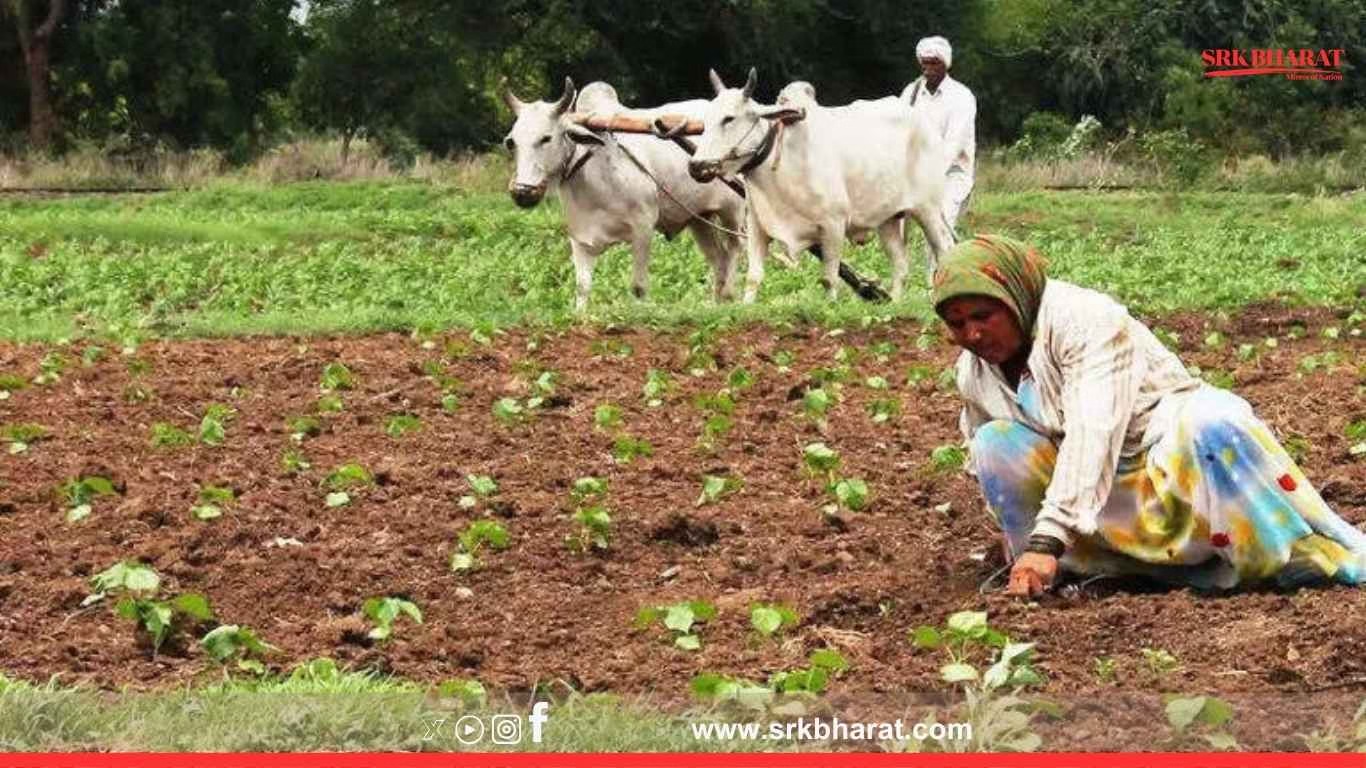India’s kharif sowing for the 2025 season has fallen behind schedule, with the deficit in cumulative rainfall raising alarms for agriculture production, food inflation, and rural incomes. According to data released by the Ministry of Agriculture and Farmers’ Welfare, total kharif acreage stood at 46.3 million hectares (Mha) as of the first week of July, which is 12% lower compared to the normal sowing for this period.
🌧️ Erratic monsoon patterns disrupt sowing cycles
The India Meteorological Department (IMD) highlighted uneven monsoon distribution as the principal cause:
- Delayed onset in central and northwest India, affecting pulses and oilseeds sowing.
- Excess rains in eastern states causing waterlogging in paddy nurseries.
- Frequent long dry spells between rain events in Maharashtra, Gujarat, and Madhya Pradesh.
🗓️ Crop-wise sowing status as of Week 1, July 2025
| Crop | Area sown (Mha) | Normal area (Mha) | Deviation (%) | Key impact states |
|---|---|---|---|---|
| Rice | 10.2 | 12.5 | -18% | Uttar Pradesh, Bihar, West Bengal |
| Pulses | 5.1 | 6.3 | -19% | Madhya Pradesh, Maharashtra, Rajasthan |
| Coarse cereals | 8.5 | 9.2 | -8% | Karnataka, Maharashtra, MP |
| Oilseeds | 6.8 | 8.1 | -16% | Gujarat, Rajasthan, MP |
| Cotton | 5.9 | 6.5 | -9% | Maharashtra, Gujarat, Telangana |
| Sugarcane | 9.8 | 9.5 | +3% | UP, Maharashtra, Karnataka |
Total kharif: 46.3 Mha vs normal 52.1 Mha (-12%)
(Source: Ministry of Agriculture data collated till 7 July 2025)
🔍 Why is sowing lagging despite forecast of normal monsoon?
Agriculture scientists explain that temporal and spatial distribution matters more than headline rainfall numbers. This season’s pattern is marked by:
- Late arrival of monsoon currents in central India.
- Concentrated heavy rainfall events interspersed with dry spells.
- Weak low-pressure systems reducing soil moisture recharge in deficit regions.
- High day temperatures reducing residual soil moisture in states like Rajasthan and MP.
🗣️ Expert and government reactions
Agriculture Commissioner Pravin Kumar stated:
“We are hopeful sowing will catch up once monsoon currents strengthen in mid-July. However, pulses and oilseeds remain a concern due to low moisture.”
Senior economist Dr. Ashok Gulati warned:
“If pulses and oilseeds sowing does not recover, we may see inflationary pressures in food prices by late kharif harvest period.”
🚜 Regional snapshot: States facing major shortfall
| State | Sowing deviation (%) | Major affected crops |
|---|---|---|
| Maharashtra | -15% | Soybean, tur |
| Madhya Pradesh | -19% | Soybean, urad, moong |
| Gujarat | -13% | Groundnut, cotton |
| Rajasthan | -17% | Pulses, coarse cereals |
| Uttar Pradesh | -9% | Paddy |
| Bihar | -12% | Paddy |
💡 Adaptive measures advised by agriculture departments
The Ministry has directed states to:
✅ Promote short-duration crop varieties for delayed sowing.
✅ Encourage millets and pulses intercropping to utilise residual moisture.
✅ Prepare for contingency seed distribution in case of sowing failures by July-end.
✅ Strengthen irrigation scheduling and water-saving technologies under PMKSY.
🔬 Forecast for July-August: Revival hopes persist
IMD’s extended range forecast suggests formation of low-pressure systems in the Bay of Bengal by mid-July, potentially improving rainfall in central and northwest India.
However, experts advise caution:
- Pulses and soybean have narrow sowing windows.
- Delay beyond third week of July reduces yield potential significantly.
- Paddy transplanting could shift to direct seeding in deficit areas to save water.
📊 Historical kharif sowing trends (last 5 years)
| Year | Total kharif acreage (Mha) | Monsoon deviation (%) |
|---|---|---|
| 2020 | 54.7 | +9% |
| 2021 | 52.9 | +1% |
| 2022 | 53.2 | +3% |
| 2023 | 50.8 | -6% |
| 2024 | 51.5 | +2% |
| 2025 | 46.3 (so far) | -12% (till July) |
(Source: Ministry of Agriculture)
🔭 Policy implications: Food inflation and import dependency
If sowing remains below normal, India may face:
- Increased imports of edible oils and pulses, worsening trade deficit.
- Higher retail food inflation, impacting household budgets.
- Strain on rural employment and income, affecting economic revival hopes.
✅ Disclaimer
This report is based on government data, IMD forecasts, and expert insights. Readers are advised to track official advisories for updates on rainfall, crop sowing, and input management in their regions.











